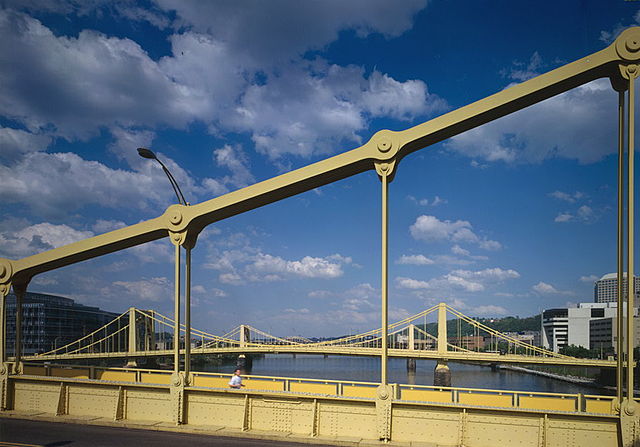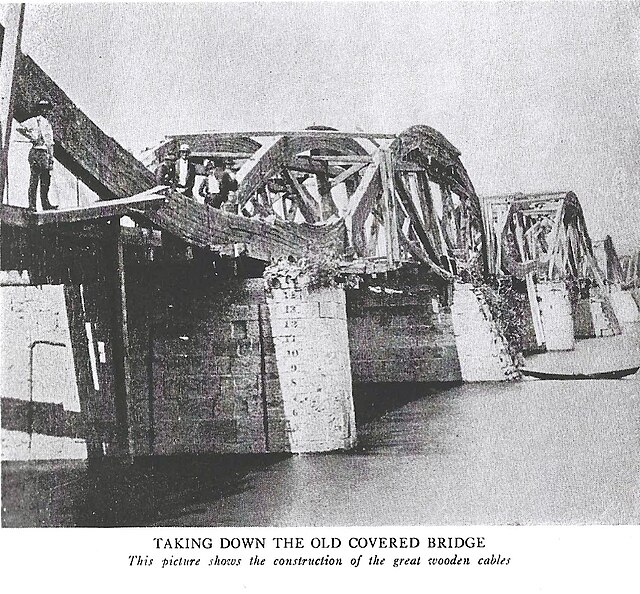Self-anchored suspension bridge
A self-anchored suspension bridge is a suspension bridge type in which the main cables attach to the ends of the deck, rather than directly to the ground or via large anchorages. The design is well-suited for construction atop elevated piers, or in areas of unstable soils where anchorages would be difficult to construct.
The main span of the eastern span of the San Francisco–Oakland Bay Bridge, the largest example of a self-anchored suspension bridge in the world.
The Three Sisters (Pittsburgh), the first self-anchored suspension spans, opened in 1926 to 1928.
Hutsonville Bridge cable anchor detail
A suspension bridge is a type of bridge in which the deck is hung below suspension cables on vertical suspenders. The first modern examples of this type of bridge were built in the early 1800s. Simple suspension bridges, which lack vertical suspenders, have a long history in many mountainous parts of the world.
The 1915 Çanakkale Bridge on the Dardanelles strait in Turkey, connecting Europe and Asia, is the longest suspension bridge in the world.
The double-decked George Washington Bridge, connecting New York City to Bergen County, New Jersey, is the world's busiest suspension bridge, carrying 106 million vehicles annually.
Chushul Chakzam, one of Thangtong Gyalpo's chain bridges, in 1904
The wooden 1808 Burr Suspension Bridge in Schenectady, NY, USA, during demolition in 1871, showing wooden cables. Spans of 160, 190, 180 and 157 feet on 3 piers began to sag, and 4 supporting piers were added in 1833 making 8 spans.







